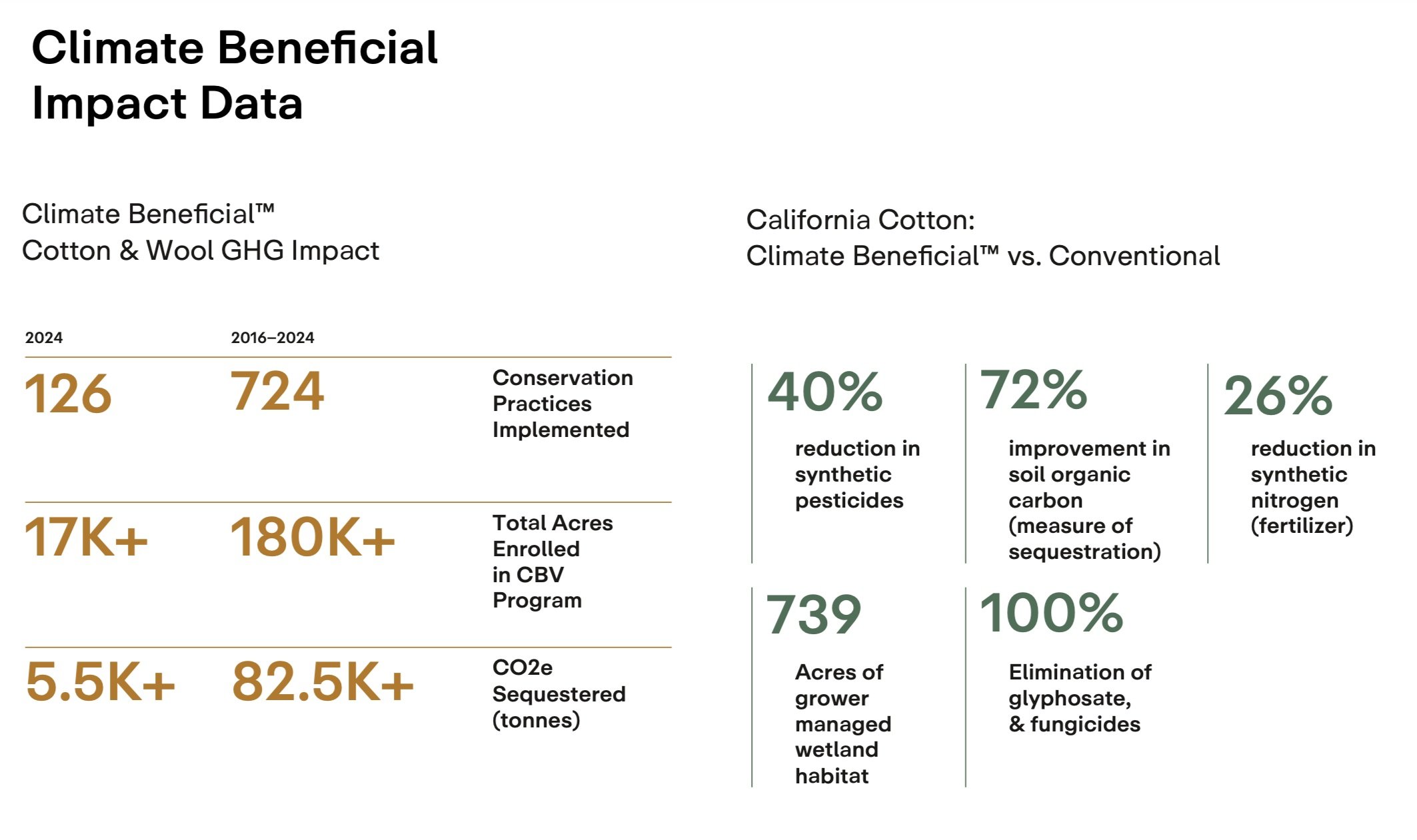Verification Standards
Climate Beneficial™ Verified provides direct technical and financial support to farmers and ranchers for the implementation of carbon farming practices.
Climate Beneficial™ works to support the transition of whole farms to more ecologically aligned, regionally situated and socially resilient systems. Our monitoring and measurement tools include a combination of direct measurement, dynamic environmental systems models and satellite systems. These tools are used to annually track and verify the continual improvement and innovative work that our producer community has embarked upon to stabilize our climate while producing high quality fiber and food.
Whole Farm Planning
Climate Beneficial™ starts with a Carbon Farm or Resilient Ranch Plan. Goals of Whole Farm Planning include:
increase terrestrial carbon (vegetation + soils) ∙ reduce the production of GHGs ∙ identify appropriate conservation practices ∙ quantify practices using COMET and IPCC calculation tools
Monitoring + Practice Implementation
Onsite visits are conducted by 3rd party Technical Assistance Providers (TAPs). Our TAP organizational partner is Carbon Cycle Institute. Common Monitoring Methods include:
GPS tagged photos and videos ∙ on-farm inspection ∙ producer records or receipts ∙ record audits ∙ satellite imagery
Certification of Verification
After practices are verified a farm or ranch receives a Certificate of Verification (CoV), which includes:
farm or ranch information ∙ practices implemented ∙ verified acreage ∙ verified volume ∙ soil test results + data trends analysis ∙ summary of estimated GHG benefit associated with participation

Brands
-
Climate Beneficial™ is built on a connection to each farmʼs place and community. The verification traces fibers back to the farm and tracks fibers throughout the supply system, allowing buyers to know their fiber farmers and connect consumers to the origin of their fiber.
-
Producers implement plans, monitor, and report on results. Each practice is mapped against these Climate Beneficial™ Verification (CBV) Outcome categories in order to support growers in an implementation strategy that will allow them to achieve holistic outcomes. Growers in the program report on their farming practices, conduct annual soil testing and measure greenhouse gas reductions using COMET planner. The Climate Beneficial™ team verifies practices and outcomes and makes data available to purchasing partners.
-
We build relationships between farmers, brands, researchers, and manufacturers - working to cultivate cross-sector learning, knowledge sharing, and pre-competitive collaboration. We support brands with storytelling and consumer and internal education. From high quality image sharing to claims and marketing support we help brands tell our participating farmers’ stories.
Farmers
-
Incentivized support with 100% of market+ price premium going back to farm to cover the cost of practice implementation, advanced purchase commitments, and technical assistance to growers.
-
Producers who participate in the Climate Beneficial™ program work closely with a Technical Assistance Provider (TAP) to engage in holistic farm planning, site assessment, and baseline testing, in order to best equip them to succeed in the practices and transitions on their landscapes. TAPʼs work on site to assess the effectiveness of practice implementation, brainstorm project development, and effectively submit evidence and data for the Climate Beneficial™ Verification requirements.
-
From federal funding (USDA grants like the Partnership for Climate-Smart Commodities) to state dollars (California’s Healthy Soils Program block grant) our Technical Service Providers work to connect farmers in our program with matching funds for practice implementation when possible.
Climate
-
Carbon is an essential building block to all life. When carbon is displaced from its natural cycle through extraction of fossil fuels and the addition of synthetic amendments such as pesticides it offers an indication of imbalance within the system. By supporting these essential components of the carbon cycle (plant mass and biodiversity and soil carbon) we not only support climate change mitigation but also ecosystem function.
-
From depletion to collective abundance, we are sowing a future of change one stream or watershed restoration project, compost application, multi-species cover crop and hedgerow planting at a time. The regenerative practices implemented in our program improve soil water holding capacity. Farmers also reduce synthetic nitrogen use and eliminate glyphosate and other harmful chemicals.
-
From long term perennial and native plant hedgerows and windbreaks, to pollinator strips, agro forestry, and multi species cover crops; many of the regenerative practices in our program are designed to improve biodiversity in crop and rangelands. We also support habitat building projects for migratory birds and pollinators.
Climate Beneficial™ Program Producer Pipeline













